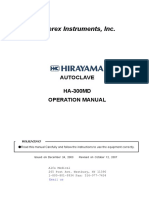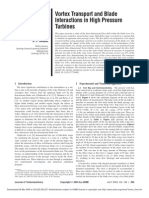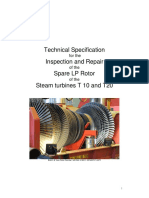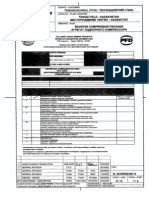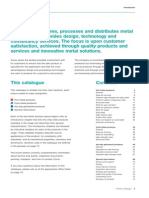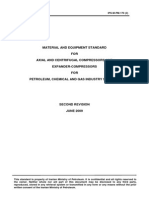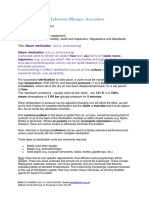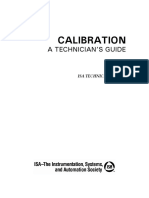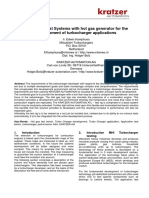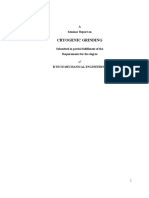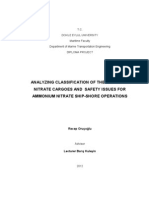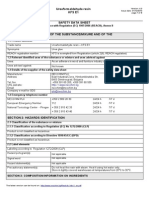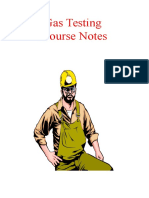List of GHS Hazard Statement & Pictograms
List of GHS Hazard Statement & Pictograms
Uploaded by
Khairul BarsriCopyright:
Available Formats
List of GHS Hazard Statement & Pictograms
List of GHS Hazard Statement & Pictograms
Uploaded by
Khairul BarsriOriginal Description:
Copyright
Available Formats
Share this document
Did you find this document useful?
Is this content inappropriate?
Copyright:
Available Formats
List of GHS Hazard Statement & Pictograms
List of GHS Hazard Statement & Pictograms
Uploaded by
Khairul BarsriCopyright:
Available Formats
GHSS Pictogram
Symb
p
Skull a
Flam
Exp
bol in the GHS
pictogram
and crossbone
Flame
me over circle
ploding bomb
GHS
S
es Acu
Flam
liquid
and m
self-h
and
Oxid
Explo
1
Pictogram
GHS
ute toxicity (for
corrosion
mable gases;
ds; flammable
mixtures; pyrop
heating substa
d mixtures whi
flammable g
dising gases; o
osives; self-rea
org
ms
S hazard class
oral, skin and
; respiratory se
flammable ae
solids; self-rea
phoric liquids;
ances and mixt
ch, in contact
gases; organic
oxidising liquids
active substan
ganic peroxide
ses
inhalation); sk
ensitizer
rosols; flamma
active substan
pyrophoric sol
tures; substan
with water, em
c peroxides
s; oxidising sol
ces and mixtu
es
kin
able
ces
lids;
ces
mit
F
lids
res;
Means
Toxic
Flammable
Oxidising
Explosive
C
G
Excla
En
Hea
Corrosion
as cylinder
amation mark
nvironment
alth hazards
C
C
S
A
repro
sing
2
Corrosive to m
ompressed ga
liquefied
Skin irritation; e
Acute and chro
Germ cell mut
oductive toxicity
gle exposure;
rep
metals; serious
as; liquefied ga
d gas; dissolve
eye irritation; s
onic hazards t
environment
tagenicity; car
y; specific targ
specific target
peated exposur
eye damage
as; refrigerated
ed gas;
skin sensitizer
o the aquatic
cinogenicity;
get organ toxici
t organ toxicity
re
d Com
Environ
ity
y
He
Corrosive
mpressed gas
Harmful
nmental hazar
ealth hazards
rds
3
GHS HAZARD STATEMENTS INFORMATION
Table A3-1.1: Physical Hazards
H-code
(1)
Hazard statement
(2)
Hazard classification
(3)
H200 Unstable explosive Unstable explosive
H201 Explosive; mass explosion hazard Explosive division 1.1
H202 Explosive; severe projection hazard Explosive division 1.2
H203 Explosive; fire, blast or projection hazard Explosive division 1.3
H204 Fire or projection hazard Explosive division 1.4
H205 May mass explode in fire Explosive division 1.5
H220 Extremely flammable gas Flammable gas category 1
H221 Flammable gas Flammable gas category 2
H222 Extremely flammable aerosol Flammable aerosol category 1
H223 Flammable aerosol Flammable aerosol category 2
H224 Extremely flammable liquid and vapour Flammable liquid category 1
H225 Highly flammable liquid and vapour Flammable liquid category 2
H226 Flammable liquid and vapour Flammable liquid category 3
H227 Flammable liquid Flammable liquid category 4
H228 Flammable solid
Flammable solid category 1
Flammable solid category 2
H240 Heating may cause an explosion
Self-reactive chemicals type A
Organic peroxides type A
H241 Heating may cause a fire or explosion
Self-reactive chemicals type B
Organic peroxides type B
H242 Heating may cause a fire
Self-reactive chemicals type C and D
Self-reactive chemicals type E and F
Organic peroxides type C and D
Organic peroxides type E and F
H250 Catches fire spontaneously if exposed to air
Pyrophoric liquid category 1
Pyrophoric solid category 1
H251 Self-heating; may catch fire Self-heating chemicals category 1
H252 Self-heating in large quantities; may catch fire Self-heating chemicals category 2
4
H-code
(1)
Hazard statement
(2)
Hazard classification
(3)
H260
In contact with water releases flammable gases
which may ignite spontaneously
Chemicals which, in contact with water, emit flammable
gas category 1
H261 In contact with water releases flammable gases
Chemicals which, in contact with water, emit flammable
gas category 2 and 3
H270 May cause or intensify fire; oxidiser Oxidizing gas category1
H271 May cause fire or explosion; strong oxidiser Oxidizing liquid category 1
H272 May intensify fire; oxidiser
Oxidizing liquid category 2
Oxidizing liquid category 3
H280
Contains gas under pressure; may explode if
heated
Gases under pressure, compressed gas
Gases under pressure, liquefied gas
Gases under pressure, dissolved gas
H281
Contains refrigerated gas; may cause cryogenic
burns or injury
Gases under pressure, refrigerated liquefied gas
H290 May be corrosive to metals Corrosive to metal category 1
5
Table A3-1.2: Health Hazards
H-code
(1)
Hazard statement
(2)
Hazard classification
(3)
H300 Fatal if swallowed
Acute toxicity category 1 (oral)
Acute toxicity category 2 (oral)
H301 Toxic if swallowed Acute toxicity category 3 (oral)
H302 Harmful if swallowed Acute toxicity category 4 (oral)
H303 Can be harmful if swallowed Acute toxicity category 5 (oral)
H304 May be fatal if swallowed and enters airways Aspiration hazard category 1
H305 May be harmful if swallowed and enters airways Aspiration hazard category 2
H310 Fatal in contact with skin
Acute toxicity category 1 (dermal)
Acute toxicity category 2 (dermal)
H311 Toxic in contact with skin Acute toxicity category 3 (dermal)
H312 Harmful in contact with skin Acute toxicity category 4 (dermal)
H313 May be harmful in contact with skin Acute toxicity category 5 (dermal)
H314 Causes severe skin burns and eye damage Skin corrosion/irritation category 1(1A/1B/1C)
H315 Causes skin irritation Skin corrosion/irritation category 2
H316 Causes light skin irritation Skin corrosion/irritation category 3
H317 May cause an allergic skin reaction Skin sensitization category 1
H318 Causes serious eye damage Serious eye damage/eye irritation category 1
H319 Causes serious eye irritation Serious eye damage/eye irritation category 2A
H320 Causes eye irritation Serious eye damage/eye irritation category 2B
H330 Fatal if inhaled
Acute toxicity category 1 (inhalation)
Acute toxicity category 2 (inhalation)
H331 Toxic if inhaled
Acute toxicity category 3 (inhalation)
H332 Harmful if inhaled Acute toxicity category 4 (inhalation)
H333 Can be harmful if inhaled Acute toxicity category 5 (inhalation)
H334
May cause allergy or asthma symptoms or
breathing difficulties if inhaled
Respiratory sensitization category 1
H335 May cause respiratory irritation Specific target organ toxicity-single exposure category 3
H336 May cause drowsiness or dizziness Specific target organ toxicity-single exposure category 3
H340 May cause genetic defects (state route of exposure Germ cell mutagenicity category 1(1A/1B)
6
H-code
(1)
Hazard statement
(2)
Hazard classification
(3)
if it is conclusively proven that no other routes of
exposure cause the hazard)
H341
Suspected of causing genetic defects (state route
of exposure if it is conclusively proven that no other
routes of exposure cause the hazard)
Germ cell mutagenicity category 2
H350
May cause cancer (state route of exposure if it is
conclusively proven that no other routes of
exposure cause the hazard)
Carcinogenicity category 1 (1A/1B)
H351
Suspected of causing cancer (state route of
exposure if it is conclusively proven that no other
routes of exposure cause the hazard)
Carcinogenicity category 2
H360
May damage fertility or the unborn child (state
specific effect if known) (state route of exposure if
it is conclusively proven that no other routes of
exposure cause the hazard)
Reproductive toxicity category 1 (1A/1B)
H361
Suspected of damaging fertility or the unborn child
(state specific effect if known) (state route of
exposure if it is conclusively proven that no other
routes of exposure cause the hazard)
Reproductive toxicity category 2
H362 May cause harm to breast-fed children Effect on or via lactation
H370
Causes damage to organs (or state all organs
effected if known) (state route of exposure if it is
conclusively proven that no other routes of
exposure cause the hazard)
Specific target organ toxicity-single exposure category 1
H371
May cause damage to organs (or state all organs
effected if known) (state route of exposure if it is
conclusively proven that no other routes of
exposure cause the hazard)
Specific target organ toxicity-single exposure category 2
H372
Causes damage to organs through prolonged or
repeated exposure
Specific target organ toxicity- repeated exposure
category 1
H373
May cause damage to organs prolonged or
repeated exposure
Specific target organ toxicity- repeated exposure
category 2
7
Table A3-1.3: Environmental Hazards
H-code
(1)
Hazard statement
(2)
Hazard classification
(3)
H400 Very toxic to aquatic life
Hazardous to the aquatic environment acute toxicity
category 1
H401 Toxic to aquatic life
Hazardous to the aquatic environment acute toxicity
category 2
H402 Harmful to aquatic life
Hazardous to the aquatic environment acute toxicity
category 3
H410 Very toxic to aquatic life with long lasting effects
Hazardous to the aquatic environment chronic toxicity
category 1
H411 Toxic to aquatic life with long lasting effects
Hazardous to the aquatic environment chronic toxicity
category 2
H412 Harmful to aquatic life with long lasting effects
Hazardous to the aquatic environment chronic toxicity
category 3
H413
May cause long lasting harmful effects to aquatic
life
Hazardous to the aquatic environment chronic toxicity
category 4
8
GHS PRECAUTIONARY STATEMENTS INFORMATION
Table A3-2.1: Precautionary statements - Prevention
Code
(1)
General precautionary
statements
(2)
Hazard class
(3)
Hazard category
(4)
Conditions for use
(5)
P201 Obtain special instructions
before use.
Explosives Unstable explosive
Germ cell mutagenicity 1A, 1B, 2
Carcinogenicity 1A, 1B, 2
Reproductive toxicity 1A, 1B, 2
Reproductive toxicity
Effects on or via
lactation
P202 Do not handle until all safety
precautions have been read
and understood.
Explosives Unstable explosive
Germ cell mutagenicity 1A, 1B, 2
Carcinogenicity 1A, 1B, 2
Reproductive toxicity 1A, 1B, 2
P210 Keep away from
heat/sparks/open flames/hot
surfaces. No smoking.
Explosives
Divisions 1.1, 1.2, 1.3,
1.4, 1.5
Manufacturer/supplier
to specify applicable ignition
source(s).
Flammable gases 1, 2
Flammable aerosols 1, 2
Flammable liquids 1, 2, 3
Flammable solids 1, 2
Self-reactive chemicals Types A, B, C, D, E, F
Pyrophoric liquids 1
Pyrophoric solids 1
Organic peroxides Types A, B, C, D, E, F
Oxidising liquids 1, 2, 3
Specify to keep away from
heat.
Oxidising solids 1, 2, 3
P211
Do not spray on an open
flame or other ignition source.
Flammable aerosols 1, 2
9
Code
(1)
General precautionary
statements
(2)
Hazard class
(3)
Hazard category
(4)
Conditions for use
(5)
P220 Keep/Store away from
clothing//combustible
materials.
Oxidising gases 1 Manufacturer/supplier
to specify incompatible
materials.
Self-reactive chemicals
Types A, B, C,
D, E, F
Oxidising liquids 1 Manufacturer/supplier
to specify incompatible
materials.
specify to keep
away from clothing
as well as other incompatible
materials.
2, 3 Manufacturer/supplier
to specify incompatible
materials.
Oxidising solids 1 Manufacturer/supplier
to specify incompatible
materials.
specify to keep
away from clothing
as well as other incompatible
materials.
2, 3 Manufacturer/supplier
to specify incompatible
materials.
Oxidising solids Types A, B, C, D, E, F
P221 Take any precaution to avoid
mixing with combustibles/
Oxidising liquids 1, 2, 3 Manufacturer/supplier
to specify incompatible
materials.
Oxidising solids 1, 2, 3
P222 Do not allow contact with air. Pyrophoric liquids 1
Pyrophoric solids 1
P223 Keep away from any possible
contact with water, because
of violent reaction and
possible flash fire.
Chemicals which, in
contact with water, emit
flammable gases
1, 2
P230 Keep wetted with Explosives Divisions 1.1, Manufacturer/supplier
10
Code
(1)
General precautionary
statements
(2)
Hazard class
(3)
Hazard category
(4)
Conditions for use
(5)
1.2, 1.3, 1.5
to specify appropriate
material.
if drying out
increases explosion
hazard, except as
needed for manufacturing
or operating processes
(e.g. nitrocellulose).
P231 Handle under inert gas. Chemicals which, in
contact with water, emit
flammable
gases
1, 2, 3
P232 Protect from moisture. Chemicals which, in
contact with water, emit
flammable gases
1, 2, 3
P233 Keep container tightly
closed.
Flammable liquids 1, 2, 3
Acute toxicity (inhalation) 1, 2, 3 if product is volatile
so as to generate
hazardous atmosphere.
Specific target organ
toxicity single exposure
(respiratory tract Irritation)
3
Specific target organ
toxicity single exposure
(narcosis)
3
P234 Keep only in original
container.
Self-reactive chemicals Types A, B, C, D, E, F
Organic peroxides Types A, B, C, D, E, F
Corrosive to metals 1
P235 Keep cool. Flammable liquids 1, 2, 3
Self-reactive chemicals Types A, B, C, D, E, F
Self-heating chemicals 1, 2
11
Code
(1)
General precautionary
statements
(2)
Hazard class
(3)
Hazard category
(4)
Conditions for use
(5)
Organic peroxides Types A, B, C, D, E, F
P240 Ground/bond container and
receiving equipment.
Explosives Divisions 1.1, 1.2, 1.3,
1.4, 1.5
if the explosive is
electrostatically sensitive.
Flammable liquids 1, 2, 3 if electrostatically
sensitive material is for
reloading.
if product is volatile
so as to generate
hazardous atmosphere.
Flammable solids 1, 2 if electrostatically
sensitive material is for
reloading.
P241 Use explosion-proof
electrical/ventilating/lighting/
/
equipment.
Flammable liquids 1, 2, 3 Manufacturer/supplier
to specify other equipment.
Flammable solids 1, 2 Manufacturer/supplier
to specify other
equipment.
if dust clouds can occur.
P242 Use only non-sparking tools.
Flammable liquids
1, 2, 3
P243 Take precautionary measures
against static discharge.
Flammable liquids
1, 2, 3
P244 Keep reduction valves free
from grease and oil.
Oxidising gases
1
P250 Do not subject to
grinding/shock//friction.
Explosives
Divisions 1.1, 1.2, 1.3,
1.4, 1.5
Manufacturer/supplier
to specify applicable rough
handling.
P251 Pressurized container: Do not Flammable aerosols 1, 2
12
Code
(1)
General precautionary
statements
(2)
Hazard class
(3)
Hazard category
(4)
Conditions for use
(5)
pierce or burn, even after use.
P260 Do not breathe
dust/fume/gas/mist/
vapours/spray.
Acute toxicity (inhalation)
1, 2
Manufacturer/supplier
to specify applicable
conditions. Specific target organ
toxicity single exposure
1, 2
Specific target organ
toxicity repeated
exposure
1, 2
Skin corrosion 1A, 1B, 1C Specify do not breathe
dusts or mists.
if inhalable particles of
dusts or mists may occur
during use.
Reproductive toxicity Effects on or via
lactation
P261 Avoid breathing dust/fume/
gas/mist/vapours/spray.
Acute toxicity (inhalation) 3, 4 Manufacturer/supplier
to specify applicable
conditions.
Respiratory sensitisation 1
Skin sensitisation 1
Specific target organ
toxicity single exposure;
(respiratory tract irritation)
3
Specific target organ
toxicity single exposure;
(narcosis)
3
P262 Do not get in eyes, on skin,
or on clothing
Acute toxicity (dermal) 1, 2
P263 Avoid contact during
pregnancy/
while nursing.
Reproductive toxicity
Effects on
or via lactation
P264 Wash thoroughly after
handling.
Acute toxicity (oral) 1, 2, 3, 4 Manufacturer/supplier
to specify parts of the
body to be washed after
Acute toxicity (dermal) 1, 2
Skin corrosion 1A, 1B, 1C
13
Code
(1)
General precautionary
statements
(2)
Hazard class
(3)
Hazard category
(4)
Conditions for use
(5)
Skin irritation 2 handling
Eye irritation 2
Reproductive toxicity
Effects on or via
lactation
Specific target organ
toxicity single exposure
1, 2
Specific target organ
toxicity repeated
exposure
1
P270 Do not eat, drink or smoke
when using this product.
Acute toxicity (oral) 1, 2, 3, 4
Acute toxicity (dermal) 1, 2
Reproductive toxicity
Effects on or via
lactation
Specific target organ
toxicity single exposure
1, 2
Specific target organ
toxicity repeated
exposure
1
P271 Use only outdoors or in a
well-ventilated area.
Acute toxicity (inhalation) 1, 2, 3, 4
Specific target organ
toxicity single exposure;
(respiratory tract irritation)
3
Specific target organ
toxicity single exposure;
(narcosis)
3
P272 Contaminated work clothing
should not be allowed out of
the workplace
Skin sensitisation 1
P273 Avoid release to the
environment.
Hazardous to the aquatic
environment acute
1 if this is not the intended
use.
14
Code
(1)
General precautionary
statements
(2)
Hazard class
(3)
Hazard category
(4)
Conditions for use
(5)
aquatic hazard
Hazardous to the aquatic
environment chronic
aquatic hazard
1, 2, 3, 4
Hazardous to the ozone
layer
1
P280 Wear protective
gloves/protective
clothing/eye protection/face
protection.
Explosives Divisions 1.1, 1.2, 1.3,
1.4, 1.5
Manufacturer/supplier
to specify type of
equipment.
Specify face protection.
Flammable liquids
1, 2, 3 Manufacturer/supplier
to specify type of
equipment.
Specify protective
gloves and eye/face
protection.
Flammable solids 1, 2
Self-reactive chemicals Types A, B, C, D, E, F
Pyrophoric liquids 1
Pyrophoric solids 1
Self-reactive chemicals 1, 2
Chemicals which, in
contact with water, emit
flammable gases
1, 2, 3
Oxidising liquids 1, 2, 3
Oxidising solids 1, 2, 3
Organic peroxides Types A, B, C, D, E, F
Acute toxicity (dermal) 1, 2, 3, 4 Manufacturer/supplier
to specify type of
equipment.
Specify protective
gloves/clothing.
15
Code
(1)
General precautionary
statements
(2)
Hazard class
(3)
Hazard category
(4)
Conditions for use
(5)
Skin corrosion 1A, 1B, 1C Manufacturer/supplier
to specify type of
equipment.
Specify protective
gloves/clothing and
eye/face protection.
Skin irritation 2 Manufacturer/supplier
to specify type of
equipment.
Specify protective
gloves.
Skin sensitisation 1
Serious eye damage/eye
irritation
1, 2 Manufacturer/supplier
to specify type of
equipment.
Specify eye/face
protection.
P281 Use personal protective
equipment as required.
Explosives Unstable explosive
Germ cell mutagenicity 1A, 1B, 2
Carcinogenicity 1A, 1B, 2
Reproductive toxicity 1A, 1B, 2
P282 Wear cold insulating
gloves/face shield/eye
protection.
Gases under pressure Refrigerated liquefied
gas
P283 Wear fire/flame
resistant/retardant clothing.
Oxidising liquids 1
Oxidising solids 1
P284 Wear respiratory protection.
Acute toxicity (inhalation) 1, 2 Manufacturer/supplier
to specify equipment.
P285 In case of inadequate
ventilation wear respiratory
protection.
Respiratory sensitisation 1 Manufacturer/supplier to
specify equipment.
16
Table A3-2.2: Precautionary statements - Prevention
Code
General precautionary statements
Hazard class Hazard category Conditions for use
P231
+
P232
Handle under inert gas. Protect
from moisture.
Chemicals which in
contact with water,
emit flammable gases
1, 2, 3
P235
+
P410
Keep cool. Protect from sunlight. Self-heating chemicals 1, 2
Table A3-2.3: Precautionary statements - Response
Code
General precautionary statements
Hazard class Hazard category Conditions for use
P301 IF SWALLOWED: Acute toxicity (oral) 1, 2, 3, 4
Skin corrosion/irritation 1A, 1B, 1C
Aspiration Hazard 1
P302 IF ON SKIN: Pyrophoric liquids 1
Acute toxicity (dermal) 1, 2, 3, 4
Skin corrosion/irritation 2
Skin sensitisation 1
P303 IF ON SKIN (or hair): Flammable liquids 1, 2, 3
Skin corrosion/irritation 1A, 1B, 1C
P304 IF INHALED: Acute toxicity
(inhalation)
1, 2, 3, 4
Skin corrosion/irritation 1A, 1B, 1C
Respiratory
sensitisation
1
Specific target organ
toxicity single
exposure; (respiratory
tract irritation)
3
Specific target organ
toxicity single
exposure; (narcosis)
3
P305 IF IN EYES: Skin corrosion/irritation 1A, 1B, 1C
17
Code
General precautionary statements
Hazard class Hazard category Conditions for use
Serious eye damage/
eye irritation
1, 2
P306 IF ON CLOTHING: Oxidising liquids 1
Oxidising solids 1
P307 IF exposed: Specific target organ
toxicity single
exposure
1
P308 IF exposed or concerned: Germ cell mutagenicity 1A, 1B, 2
Carcinogenicity 1A, 1B, 2
Reproductive toxicity 1A, 1B, 2
Reproductive toxicity
Effects on
or via lactation
P309 IF exposed or if you feel
unwell:
Specific target organ
toxicity single
exposure
2
P310 Immediately call a POISON
CENTER or doctor/physician.
Acute toxicity (oral) 1, 2, 3
Acute toxicity (dermal) 1, 2
Acute toxicity
(inhalation)
1, 2
Skin corrosion/irritation 1A, 1B, 1C
Serious eye
damage/eye irritation
1
Aspiration hazard 1
P311 Call a POISON CENTER or
doctor/physician.
Acute toxicity
(inhalation)
3
Respiratory
sensitisation
1
Specific target organ
toxicity single
exposure
1, 2
P312 Call a POISON CENTER or
doctor/physician if you feel unwell.
Acute toxicity (oral) 4
Acute toxicity (dermal) 3, 4
18
Code
General precautionary statements
Hazard class Hazard category Conditions for use
Acute toxicity
(inhalation)
4
Specific target organ
toxicity single
exposure; (respiratory
tract Irritation)
3
Specific target organ
toxicity single
exposure; (narcosis)
3
P313 Get medical advice/attention.
Skin corrosion/irritation 2, 3
Serious eye
damage/eye irritation
2
Skin sensitisation 1
Germ cell mutagenicity 1A, 1B, 2
Carcinogenicity 1A, 1B, 2
Reproductive toxicity 1A, 1B, 2
Reproductive toxicity
Effects on
or via lactation
P314 Get medical advice/attention if you
feel unwell.
Specific target organ
toxicity repeated
exposure
1, 2
P315 Get immediate medical
advice/attention.
Gases under pressure Refrigerated
liquefied gas
P320 Specific treatment is urgent
(see on this label).
Acute toxicity
(inhalation)
1, 2 .Reference to supplemental
first aid instruction.
if immediate administration of
antidote is required
P321 Specific treatment (see
on this label).
Acute toxicity (oral) 1, 2, 3 .Reference to supplemental
first aid instruction.
if immediate administration of
antidote is required
Acute toxicity
(inhalation)
3 Reference to supplemental
first aid instruction.
19
Code
General precautionary statements
Hazard class Hazard category Conditions for use
if immediate specific
measures are required.
Specific target organ
toxicity single
exposure
1 Reference to supplemental
first aid instruction.
if immediate measures are
required.
Skin sensitisation 1 Reference to supplemental
first aid instruction.
manufacturer/supplier
may specify a cleansing agent if
appropriate.
Skin corrosion/irritation 1A, 1B, 1C, 2
P322 Specific measures (see on
this label).
Acute toxicity (dermal) 1, 2, 3, 4 Reference to supplemental
first aid instruction.
if immediate measures
such as specific cleansing
agent is advised.
P330 Rinse mouth. Acute toxicity (oral) 1, 2, 3, 4
Skin corrosion/irritation 1A, 1B, 1C
P331 Do NOT induce vomiting. Skin corrosion/irritation 1A, 1B, 1C
Aspiration hazard 1
P332 If skin irritation occurs: Skin corrosion/irritation 2,
P333 If skin irritation or rash occurs: Skin sensitisation 1
P334 Immerse in cool water/wrap in wet
bandages.
Pyrophoric liquids 1
Pyrophoric solids 1
Chemicals which, in
contact with water,
emit flammable
gases
1, 2
P335 Brush off loose particles from skin.
Pyrophoric solids 1
Chemicals which, in
contact with water,
emit flammable
gases
1, 2
20
Code
General precautionary statements
Hazard class Hazard category Conditions for use
P336 Thaw frosted parts with lukewarm
water. Do not rub affected area.
Gases under pressure Refrigerated
liquefied gas
P337 If eye irritation persists: Serious eye
damage/eye irritation
2
P338 Remove contact lenses, if present
and easy to do. Continue rinsing.
Skin corrosion/irritation 1A, 1B, 1C
Serious eye damage/
eye irritation
1, 2
P340 Remove victim to fresh air and
keep at rest in a position
comfortable for breathing.
Acute toxicity
(inhalation)
1, 2, 3, 4
Skin corrosion/irritation 1A, 1B, 1C
Specific target organ
toxicity single
exposure; (respiratory
tract irritation)
3
Specific target organ
toxicity single
exposure; (narcosis)
3
P341 If breathing is difficult,
remove victim to fresh air
and keep at rest in a position
comfortable for breathing.
Respiratory
sensitisation
1
P342 If experiencing respiratory
symptoms:
Respiratory
sensitisation
1
P350 Gently wash with plenty of soap
and water.
Acute toxicity (dermal) 1, 2
P351 Rinse cautiously with water for
several minutes.
Skin corrosion/irritation 1A, 1B, 1C
Serious eye
damage/eye irritation
1, 2
P352 Wash with plenty of soap and
water.
Acute toxicity (dermal) 3, 4
Skin corrosion/irritation 2
Skin sensitisation 1
P353 Rinse skin with water/shower. Flammable liquids 1, 2, 3
21
Code
General precautionary statements
Hazard class Hazard category Conditions for use
Skin corrosion/irritation 1A, 1B, 1C
P360 Rinse immediately contaminated
clothing and skin with plenty of
water before removing clothes.
Oxidising liquids 1
Oxidising solids 1
P361 Remove/Take off immediately all
contaminated clothing.
Flammable liquids 1, 2, 3
Acute toxicity (dermal) 1, 2, 3
Skin corrosion/irritation 1A, 1B, 1C
P362 Take off contaminated clothing and
wash before reuse.
Skin corrosion/irritation 2
P363 Wash contaminated clothing before
reuse.
Acute toxicity (dermal) 1, 2, 3, 4
Skin corrosion/irritation 1A, 1B, 1C
Skin sensitisation 1
P370 In case of fire: Explosives Divisions 1.1, 1.2,
1.3, 1.4,1.5
Oxidising gases 1
Flammable liquids 1, 2, 3
Flammable solids 1, 2
Self-reactive chemicals Types A, B, C, D, E,
F
Pyrophoric liquids 1
Pyrophoric solids 1
Chemicals which, in
contact with water,
emit flammable
gases
1, 2, 3
Oxidising liquids 1, 2, 3
Oxidising solids 1, 2, 3
P371 In case of major fire and large
quantities:
Oxidising liquids 1
Oxidising solids 1
P372 Explosion risk in case of fire.
Explosives Unstable
explosives and
Divisions 1.1, 1.2,
1.3, 1.4, 1.5
except if explosives
are 1.4S AMMUNITION
AND COMPONENTS
THEREOF
22
Code
General precautionary statements
Hazard class Hazard category Conditions for use
P373 DO NOT fight fire when fire reaches
explosives.
Explosives Unstable explosives
and Divisions 1.1,
1.2, 1.3, 1.4, 1.5
P374 Fight fire with normal precautions
from a reasonable distance.
Explosives Division 1.4 if explosives are 1.4S
AMMUNITION AND
COMPONENTS THEREOF
P375 Fight fire remotely due to the risk of
explosion.
Self-reactive chemicals Types A, B
Oxidising liquids 1
Oxidising solids 1
P376 Stop leak if safe to do so. Oxidising gases 1
P377 Leaking gas fire: Do not extinguish,
unless leak can be stopped safely.
Flammable gases 1, 2
P378 Use for extinction. Flammable liquids 1, 2, 3 Manufacturer/supplier
to specify appropriate
media
if water increases risk.
Flammable solids 1, 2
Self-reactive chemicals Types A, B, C, D, E,
F
Pyrophoric liquids 1
Pyrophoric solids 1
chemicals which, in
contact with water,
emit flammable
gases
1, 2, 3
Oxidising liquids 1, 2, 3
Oxidising solids 1, 2, 3
P380 Evacuate area. Explosives Unstable explosives
Explosives Divisions 1.1, 1.2,
1.3, 1.4, 1.5
Self-reactive chemicals Types A, B
Oxidising liquids 1
Oxidising solids 1
P381 Eliminate all ignition sources if safe
to do so.
Flammable gases 1, 2
23
Code
General precautionary statements
Hazard class Hazard category Conditions for use
P390 Absorb spillage to prevent material
damage.
Corrosive to metals 1
P391 Collect spillage.
Hazardous to the
aquatic environment
acute hazard
1
Hazardous to the
aquatic environment
chronic hazard
1, 2
Table A3.4: Precautionary statements - Response
Code
General precautionary statements
Hazard class
Hazard category
Conditions for use
P301
+
P310
IF SWALLOWED: Immediately call a
POISON CENTER or
doctor/physician.
Acute toxicity (oral)
1, 2, 3
Aspiration hazard
1
P301
+
P312
IF SWALLOWED: Call a POISON
CENTER or doctor/ physician if you
feel unwell.
Acute toxicity (oral) 4
P301
+
P330
+
P331
IF SWALLOWED: Rinse mouth. Do
NOT induce vomiting.
Skin corrosion/irritation 1A, 1B, 1C
P302
+
P334
IF ON SKIN: Immerse in cool
water/wrap in wet bandages.
Pyrophoric liquids 1
P302
+
P350
IF ON SKIN: Gently wash with
plenty of soap and water.
Acute toxicity (dermal) 1, 2
24
Code
General precautionary statements
Hazard class
Hazard category
Conditions for use
P302
+
P352
IF ON SKIN: Wash with plenty of
soap and water.
Acute toxicity (dermal)
3, 4
Skin corrosion/irritation 2
Skin sensitisation
1
P303
+
P361
+
P353
IF ON SKIN (or hair):
Remove/Take off immediately all
contaminated clothing. Rinse skin
with water/shower.
Flammable liquids
1, 2, 3
Skin corrosion/irritation 1A, 1B, 1C
P304
+
P340
IF INHALED: Remove victim to
fresh air and keep at rest in a
position comfortable for breathing.
Acute toxicity
(inhalation)
1, 2, 3, 4
Skin corrosion/irritation 1A, 1B, 1C
Specific target organ
toxicity single
exposure; (respiratory
tract irritation)
3
Specific target organ
toxicity single
exposure; (narcosis)
3
P304
+
P341
IF INHALED: If breathing is difficult,
remove victim to fresh air and keep
at rest in a position comfortable for
breathing.
Respiratory
sensitisation
1
P305
+
P351
+
P338
IF IN EYES: Rinse cautiously with
water for several minutes.
Remove contact lenses, if present
and easy to do. Continue rinsing.
Skin corrosion/irritation 1A, 1B, 1C
Serious eye
damage/eye irritation
1, 2
P306
+
P360
IF ON CLOTHING: Rinse
immediately contaminated clothing
and skin with plenty of water before
Oxidising liquids 1
Oxidising solids 1
25
Code
General precautionary statements
Hazard class
Hazard category
Conditions for use
removing clothes.
P307
+
P311
IF exposed: Call a POISON
CENTER or doctor/physician.
Specific target organ
toxicity single
exposure
1
P308
+
P313
IF exposed or concerned:
Get medical advice/attention.
Germ cell mutagenicity 1A, 1B, 2
Carcinogenicity 1A, 1B, 2
Reproductive toxicity
1A, 1B, 2
Reproductive toxicity Effects on or via
lactation
P309
+
P311
IF exposed or if you feel unwell:
Call a POISON CENTER or
doctor/physician.
Specific target organ
toxicity single
exposure
2
P332
+
P313
If skin irritation occurs: Get medical
advice/attention.
Skin corrosion/irritation 2
P333
+
P313
If skin irritation or rash occurs: Get
medical advice/ attention.
Skin sensitisation 1
P335
+
P334
Brush off loose particles from skin.
Immerse in cool water/wrap in wet
bandages.
Pyrophoric solids 1
Chemicals which, in
contact with water,
emit flammable gases
1, 2
P337
+
P313
If eye irritation persists: Get
medical advice/attention.
Serious eye damage/
eye irritation
2
P342
+
If experiencing respiratory
symptoms: Call a POISON CENTER
Respiratory
sensitisation
1
26
Code
General precautionary statements
Hazard class
Hazard category
Conditions for use
P311
or doctor/physician.
P370
+
P376
In case of fire: Stop leak if safe to
do so.
Oxidizing gases 1
P370
+
P378
In case of fire: Use for extinction.
Flammable liquids 1, 2, 3 ...Manufacturer/supplier to
specify appropriate media.
if water increases risk.
Flammable solids 1, 2
Self-reactive chemicals Types A, B, C, D, E,
F
Pyrophoric liquids
1
Pyrophoric solids
1
Chemicals which, in
contact with water,
emit flammable gases
1, 2, 3
Oxidising liquids
1, 2, 3
Oxidising solids
1, 2, 3
P370
+
P380
In case of fire: Evacuate area.
Explosives Divisions 1.1, 1.2,
1.3, 1.4, 1.5
P370
+
P380
+
P375
In case of fire: Evacuate area. Fight
fire remotely due to the risk of
explosion.
Self-reactive chemicals Types A, B
P371 In case of major fire and large Oxidising liquids 1
27
Code
General precautionary statements
Hazard class
Hazard category
Conditions for use
+
P380
+
P375
quantities: Evacuate area. Fight fire
remotely due to the risk of
explosion.
Oxidising solids 1
Table A3.2.5: Precautionary statements - Storage
Code
General precautionary statements
Hazard class
Hazard category
Conditions for use
P401 Store Explosives Unstable explosives
and Divisions
1.1,1.2, 1.3, 1.4,1.5
in accordance with
local/regional/national/
international regulations (to be
specified).
P402 Store in a dry place. Chemicals which, in
contact with water,
emit flammable gases
1, 2, 3
P403 Store in a well-ventilated
place.
Flammable gases 1, 2 if product is volatile so as to
generate hazardous atmosphere.
Oxidising gases 1
Gases under pressure Compressed gas
Liquefied gas
Refrigerated
Liquefied gas
Dissolved gas
Flammable liquids
1, 2, 3
Self-reactive chemicals Types A, B, C,D, E,
F
28
Code
General precautionary statements
Hazard class
Hazard category
Conditions for use
Acute toxicity
(inhalation)
1, 2, 3
Specific target organ
toxicity single
exposure; (respiratory
tract irritation)
3
Specific target organ
toxicity single
exposure; (narcosis)
3
P404 Store in a closed container. Chemicals which, in
contact with water,
emit flammable gases
1, 2, 3
P405 Store locked up. Acute toxicity (oral)
1, 2, 3
Acute toxicity (dermal) 1, 2, 3
Acute toxicity
(inhalation)
1, 2, 3
Skin corrosion/skin
irritation
1A, 1B, 1C
Germ cell mutagenicity 1A, 1B, 2
Carcinogenicity 1A, 1B, 2
Reproductive toxicity 1A, 1B, 2
Specific target organ
toxicity single
exposure
1, 2
Specific target organ
toxicity single
exposure; (respiratory
tract irritation)
3
Specific target organ
toxicity single
3
29
Code
General precautionary statements
Hazard class
Hazard category
Conditions for use
exposure; (narcosis)
Aspiration hazard 1
P406 Store in corrosive resistant/
container with a resistant
inner liner.
Corrosive to metals 1 Manufacturer/supplier
to specify other compatible
materials.
P407 Maintain air gap between
stacks/pallets.
Self-heating chemicals 1, 2
P410 Protect from sunlight. Flammable aerosols
1, 2
Gases under pressure Compressed gas
Liquefied gas
Dissolved gas
Self-heating chemicals 1, 2
Organic peroxides
Types A, B, C, D, E,
F
P411 Store at temperatures not
exceeding
o
C/
o
F.
Self-reactive chemicals Types A, B, C, D, E,
F
Manufacturer/supplier
to specify temperature
Organic peroxides Types A, B, C, D, E,
F
P412 Do not expose to temperatures
exceeding 50
o
C/122
o
F.
Flammable aerosols 1, 2
P413 Store bulk masses greater
than kg/lbs at temperatures
not exceeding
o
C/
o
F.
Self-heating chemicals 1, 2 Manufacturer/supplier
to specify mass and temperature.
P420 Store away from other materials.
Self-reactive chemicals Types A, B, C,
D, E, F
Self-heating chemicals 1, 2
30
Code
General precautionary statements
Hazard class
Hazard category
Conditions for use
Organic peroxides Types A, B, C, D, E,
F
P422 Store contents under Pyrophoric liquids
1 Manufacturer/supplier
to specify appropriate
liquid or inert gas
Pyrophoric solids
1
Table A3.2.6: Precautionary statements - Storage
Code
General precautionary statements
Hazard class
Hazard category
Conditions for use
P402
+
P404
Store in a dry place. Store in a
closed container.
Chemicals which, in
contact with water,
emit flammable gases
1, 2, 3
P403
+
P233
Store in a well-ventilated place.
Keep container tightly closed.
Acute toxicity
(inhalation)
1, 2, 3 if product is volatile
so as to generate
hazardous
Specific target organ
toxicity atmosphere.
single exposure;
(respiratory tract
irritation)
3
Specific target organ
toxicity single
exposure; (narcosis)
3
P403
+
P235
Store in a well-ventilated place.
Keep cool.
Flammable liquids 1, 2, 3
Self-reactive chemicals Types A, B, C, D, E,
F
P410
+
Protect from sunlight. Store in a
well-ventilated place.
Gases under pressure Compressed gas
Liquefied gas
31
Code
General precautionary statements
Hazard class
Hazard category
Conditions for use
P403
Dissolved gas
P410
+
P412
Protect from sunlight. Do
not expose to temperatures
exceeding 50
o
C/122
o
F.
Flammable aerosols 1, 2
P411
+
P235
Store at temperatures not
exceeding
o
C/
o
F. Keep cool.
Organic peroxides Types A, B, C, D, E,
F
Manufacturer/supplier
to specify temperature.
Table A3.2.7: Precautionary statements - Disposal
Code
General precautionary statements
Hazard class
Hazard category
Conditions for use
P501 Dispose of contents/container
to
Explosives Unstable explosives
and Divisions 1.1,
1.2, 1.3, 1.4,1.5
in accordance with
local/regional/national/
international regulation
(to be specified).
Flammable liquids 1, 2, 3
Self-reactive chemicals Types A, B, C, D, E,
F
Chemicals which, in
contact with water,
emit flammable gases
1, 2, 3
Oxidising liquids
1, 2, 3
Oxidising solids 1, 2, 3
Organic peroxides
Types A, B, C, D, E,
F
32
Code
General precautionary statements
Hazard class
Hazard category
Conditions for use
Acute toxicity (oral)
1, 2, 3, 4
Acute toxicity (dermal)
1, 2, 3, 4
Acute toxicity
(inhalation)
1, 2
Skin corrosion/irritation
1A, 1B, 1C
Respiratory
sensitisation
1
Skin sensitisation
1
Germ cell mutagenicity
1A, 1B, 2
Carcinogenicity 1A, 1B, 2
Reproductive toxicity 1A, 1B, 2
Specific target organ
toxicity single
exposure
1, 2
Specific target organ
toxicity single
exposure; (respiratory
tract irritation)
3
Specific target organ
toxicity single
exposure; (narcosis)
3
Specific target organ
toxicity repeated
exposure
1, 2
Aspiration hazard
1
Hazardous to the 1
33
Code
General precautionary statements
Hazard class
Hazard category
Conditions for use
aquatic environment
acute hazard
Hazardous to the
aquatic environment
chronic hazard
1, 2, 3, 4
Hazardous to the
ozone layer
1
You might also like
- ANSI EyewashDocument28 pagesANSI Eyewashmyoldtoast0% (1)
- Mechanical Engineering ExaminationDocument4 pagesMechanical Engineering ExaminationViswa Nathan0% (2)
- Hirayama HA 300MD Operation ManualDocument29 pagesHirayama HA 300MD Operation ManualMuhammad Uzair0% (1)
- Ch15 TaylorDocument12 pagesCh15 Taylorramnadh803181No ratings yet
- Advantages of High Speed BalancingDocument29 pagesAdvantages of High Speed BalancingAkshayNo ratings yet
- Vortex Transport and Blade Interactions in High Pressure TurbinesDocument11 pagesVortex Transport and Blade Interactions in High Pressure Turbinesapi-19772009100% (1)
- Appendix 6a - Technical Specifiction Spare Rotor Repair T10 and T20Document17 pagesAppendix 6a - Technical Specifiction Spare Rotor Repair T10 and T20Dino Andrian100% (1)
- Polder Pumps ManualDocument7 pagesPolder Pumps ManualHiren PatelNo ratings yet
- Flow Phenomenon in Steam Turbine DiskDocument9 pagesFlow Phenomenon in Steam Turbine Diskrashm006ranjan100% (1)
- Rbalance Rotor Balancing ProcedureDocument2 pagesRbalance Rotor Balancing ProcedureBradley NelsonNo ratings yet
- BCL506 Centifigugal Compressor SpecificationDocument13 pagesBCL506 Centifigugal Compressor SpecificationhakimsalimiNo ratings yet
- API Standards For Mechanical Rotating Machinery: September 2020Document4 pagesAPI Standards For Mechanical Rotating Machinery: September 2020khabiranNo ratings yet
- Reblading Na 57Document3 pagesReblading Na 57Sumit SethNo ratings yet
- Dynamic Spin Testing-060220Document8 pagesDynamic Spin Testing-060220rymon.engineeringNo ratings yet
- 44 e 6Document10 pages44 e 6thlim19078656No ratings yet
- Review of Rotor BalancingDocument8 pagesReview of Rotor BalancingLasse HansenNo ratings yet
- Debinding Processes-: Friedherz H. Becker Riedhammer GMBH Klingenhofstrasse 72 90411 NürnbergDocument21 pagesDebinding Processes-: Friedherz H. Becker Riedhammer GMBH Klingenhofstrasse 72 90411 NürnbergAzrul ZafrieNo ratings yet
- Gas Turbine Operation and MaintenanceDocument21 pagesGas Turbine Operation and Maintenanceم.عبدالله الشامان ُEng:Abdullah AlShaman100% (1)
- An Investigation of Transient Thermal Analysis of 1 Stage Gas Turbine Blade Manufactured by Directional Solidification and Mechanically Alloyed Nickel-Based SuperalloysDocument12 pagesAn Investigation of Transient Thermal Analysis of 1 Stage Gas Turbine Blade Manufactured by Directional Solidification and Mechanically Alloyed Nickel-Based SuperalloyshidaiNo ratings yet
- FiltrationDocument23 pagesFiltrationJorn DoeNo ratings yet
- 03 Flash Point PDFDocument10 pages03 Flash Point PDFالعراقي الفضلي100% (1)
- STP 1573-2014Document208 pagesSTP 1573-2014HieuHTNo ratings yet
- Components of GMP - Pharma UptodayDocument3 pagesComponents of GMP - Pharma UptodaySathish VemulaNo ratings yet
- HRCA SteelDocument30 pagesHRCA SteelShankar PranavNo ratings yet
- 074398Document7 pages074398Subhajit Das100% (1)
- Continuous Monitoring SystemDocument3 pagesContinuous Monitoring SystemsamiNo ratings yet
- Rotor Dynamics of Aircraft Gas Turbine EnginesDocument5 pagesRotor Dynamics of Aircraft Gas Turbine EnginesfengrotorNo ratings yet
- Guidelines Chemical Register DOSH PDFDocument26 pagesGuidelines Chemical Register DOSH PDFzulfactNo ratings yet
- Hydraulic Machinery Lecture NotesDocument31 pagesHydraulic Machinery Lecture NotesPratik RaoNo ratings yet
- Api 610Document1 pageApi 610Angel CipagautaNo ratings yet
- M PM 170Document34 pagesM PM 170mahesh_eilNo ratings yet
- Wet SealsDocument82 pagesWet Sealsabufaaiz nabilNo ratings yet
- Shop Test Procedure For TurbineDocument9 pagesShop Test Procedure For TurbineAbdulNo ratings yet
- SOP For Disposal of Fuel SludgeDocument2 pagesSOP For Disposal of Fuel Sludgesaikumar selaNo ratings yet
- Compressor SugeDocument9 pagesCompressor Sugeprashanth1965No ratings yet
- Pressure Systems Safety Ifluids Engineering ServicesDocument7 pagesPressure Systems Safety Ifluids Engineering ServicesRaagul SanthanamNo ratings yet
- General Instructions For Tenderers: All Tenderers Must Carefully Observe The Following InstructionsDocument16 pagesGeneral Instructions For Tenderers: All Tenderers Must Carefully Observe The Following InstructionsMark KNo ratings yet
- 2019 03 28 Seminar 8 459 Ed Wilcox PPPDocument61 pages2019 03 28 Seminar 8 459 Ed Wilcox PPPSasi NimmakayalaNo ratings yet
- MSC 402Document13 pagesMSC 402Nego1975No ratings yet
- Comparison of HEPA/ULPA Filter Test StandardsDocument8 pagesComparison of HEPA/ULPA Filter Test StandardsAjay KumarNo ratings yet
- BakerHughes ReciprocatingCompressors Overview-030321Document16 pagesBakerHughes ReciprocatingCompressors Overview-030321ganesh upadhyaya100% (1)
- Lma The Ritish Laboratory Managers AssociationDocument4 pagesLma The Ritish Laboratory Managers Associationchatxxnoir4263No ratings yet
- Guidance Document For Fuel Burning Equipments and Air Pollution Control SystemsDocument95 pagesGuidance Document For Fuel Burning Equipments and Air Pollution Control Systemshafidhrahadiyan2No ratings yet
- Reciprocating Compressor MaintenanceDocument5 pagesReciprocating Compressor MaintenanceshimaNo ratings yet
- Eme Lab Manual PDFDocument45 pagesEme Lab Manual PDFpatidar montuNo ratings yet
- 32 Samss 008Document26 pages32 Samss 008naruto256100% (1)
- Effect or Reynolds Number and Surface Roughness On The Efficiency of Centrifugal PumpsDocument10 pagesEffect or Reynolds Number and Surface Roughness On The Efficiency of Centrifugal PumpsHayderAlSamawiNo ratings yet
- 2024 Webinar Medical Device Stability Studies - Ensuring Product Reliability - Sylvain Darondel - Vincent Rietsch (France) - 290224Document34 pages2024 Webinar Medical Device Stability Studies - Ensuring Product Reliability - Sylvain Darondel - Vincent Rietsch (France) - 290224Mohit AggarwalNo ratings yet
- Calibration: A Technician'S GuideDocument4 pagesCalibration: A Technician'S GuideNia dewiNo ratings yet
- DMFDocument7 pagesDMFJeff HowardNo ratings yet
- Report On New Demineralized Water PlantDocument17 pagesReport On New Demineralized Water PlantGulfam ShahzadNo ratings yet
- Is-11255.2.1985 - Methods For Measurement of Emissions From Stationary-SO2Document14 pagesIs-11255.2.1985 - Methods For Measurement of Emissions From Stationary-SO2Stacy WilsonNo ratings yet
- Requirements For Compressed Air in The Pharmaceutical IndustryDocument2 pagesRequirements For Compressed Air in The Pharmaceutical IndustryMina Maher MikhailNo ratings yet
- Integrated Test Systems With Hot Gas Generator For The Development of Turbocharger ApplicationsDocument7 pagesIntegrated Test Systems With Hot Gas Generator For The Development of Turbocharger ApplicationsravigobiNo ratings yet
- OrganicChemistry 2Document46 pagesOrganicChemistry 2Noor FarhanNo ratings yet
- CLP Poster 1 A4 SizeDocument5 pagesCLP Poster 1 A4 SizePrashanthMNair100% (1)
- MSDS3647 GB02 BeDocument14 pagesMSDS3647 GB02 Betakoudjoucabrel9No ratings yet
- Globally Harmonized System Pictogram Reference TableDocument8 pagesGlobally Harmonized System Pictogram Reference Tableswaroop_exlncNo ratings yet
- SDS Wet Lead Acid EnglishDocument12 pagesSDS Wet Lead Acid EnglishNideeshNo ratings yet
- SECTION 16: Other Information: Pilot IIDocument1 pageSECTION 16: Other Information: Pilot IITamerTamerNo ratings yet
- Practical Patch Testing and Chemical Allergens in Contact DermatitisFrom EverandPractical Patch Testing and Chemical Allergens in Contact DermatitisNo ratings yet
- Republic of Korea - Control of Firearms, Swords, Explosives, Etc. ActDocument24 pagesRepublic of Korea - Control of Firearms, Swords, Explosives, Etc. ActJohn HorneNo ratings yet
- Guideline SW StorageDocument57 pagesGuideline SW Storagekeuromok100% (1)
- Insensitive Munitions AgeingDocument26 pagesInsensitive Munitions Ageingg c agnihotriNo ratings yet
- Fracturamiento de Rocas Por PlasmaDocument16 pagesFracturamiento de Rocas Por PlasmaDarío Valenzuela Van Treek100% (2)
- Blast Effects Evaluation Using TNT EquivalentDocument4 pagesBlast Effects Evaluation Using TNT Equivalentbang8rosNo ratings yet
- Cryogenic GrindingDocument30 pagesCryogenic GrindingVIBHOR BANSALNo ratings yet
- 2004-Small Scale Modeling of Explosive Blast in Urban ScenariosDocument8 pages2004-Small Scale Modeling of Explosive Blast in Urban ScenariosjleuhNo ratings yet
- JHA GasesDocument2 pagesJHA Gasesalokc100% (1)
- Analysing Classification of Ammonium Nitrate Cargoes and Safety Issues For Ammonium Nitrate Ship-Shore OperationsDocument139 pagesAnalysing Classification of Ammonium Nitrate Cargoes and Safety Issues For Ammonium Nitrate Ship-Shore OperationsRecep Oruçoğlu100% (2)
- Uf MsdsDocument8 pagesUf MsdsVinnyVidichiNo ratings yet
- Gas Testing COURSE NOTESDocument83 pagesGas Testing COURSE NOTEStahermoh100% (1)
- High Explosives and Propellants by FordhamDocument291 pagesHigh Explosives and Propellants by FordhamMoltKee100% (1)
- Explosives Sazfety Seminar 1992 AD A261116Document634 pagesExplosives Sazfety Seminar 1992 AD A261116lpayne100% (1)
- Liquefied Petroleum Gas C3H8 Safety Data Sheet SDS P4646Document10 pagesLiquefied Petroleum Gas C3H8 Safety Data Sheet SDS P4646sugandaraj522No ratings yet
- Regulation - 2281 - Environmental Regulation For WorkplacesDocument23 pagesRegulation - 2281 - Environmental Regulation For WorkplaceshartjieleesNo ratings yet
- High Energy Rate Forming ProcessDocument8 pagesHigh Energy Rate Forming Processjasonmani90No ratings yet
- Firearm PropellantsDocument11 pagesFirearm PropellantsHerbert Gongon100% (1)
- University of Pardubice - 14th International Seminar NTREM (2011) PDFDocument1,062 pagesUniversity of Pardubice - 14th International Seminar NTREM (2011) PDFBalbalaManiukNo ratings yet
- Bo4 DemoDocument30 pagesBo4 DemoLo Shun FatNo ratings yet
- Military Fire Suppression SystemsDocument17 pagesMilitary Fire Suppression Systemselianacelestepereira100% (1)
- KRBS Dtailed Index - Volume 1 To 4Document19 pagesKRBS Dtailed Index - Volume 1 To 4kushaljp8989No ratings yet
- Material Safety Data Sheet: 1. Identification of The Substance/mixture and of The Company/undertakingDocument10 pagesMaterial Safety Data Sheet: 1. Identification of The Substance/mixture and of The Company/undertakingKadirOzturkNo ratings yet
- Earthing and BondingDocument4 pagesEarthing and BondingAbdul QuddusNo ratings yet
- Aemsc Precursor Code of Practice Ed 1 1999Document37 pagesAemsc Precursor Code of Practice Ed 1 1999SabariyantoNo ratings yet
- Equation of State and Reaction Rate For Condensed-Phase ExplosivesDocument11 pagesEquation of State and Reaction Rate For Condensed-Phase ExplosivesalialiNo ratings yet
- BMCG PresentationDocument21 pagesBMCG PresentationmarkandeyaNo ratings yet
- Explosives - ANFO (Ammonium Nitrate - Fuel Oil)Document3 pagesExplosives - ANFO (Ammonium Nitrate - Fuel Oil)Mithelesh Purohit100% (1)
- Chapter 05Document39 pagesChapter 05pdaga19691383No ratings yet
- A Field Guide To Manufactured ExplosivesDocument8 pagesA Field Guide To Manufactured ExplosivesNazmul HasanNo ratings yet


